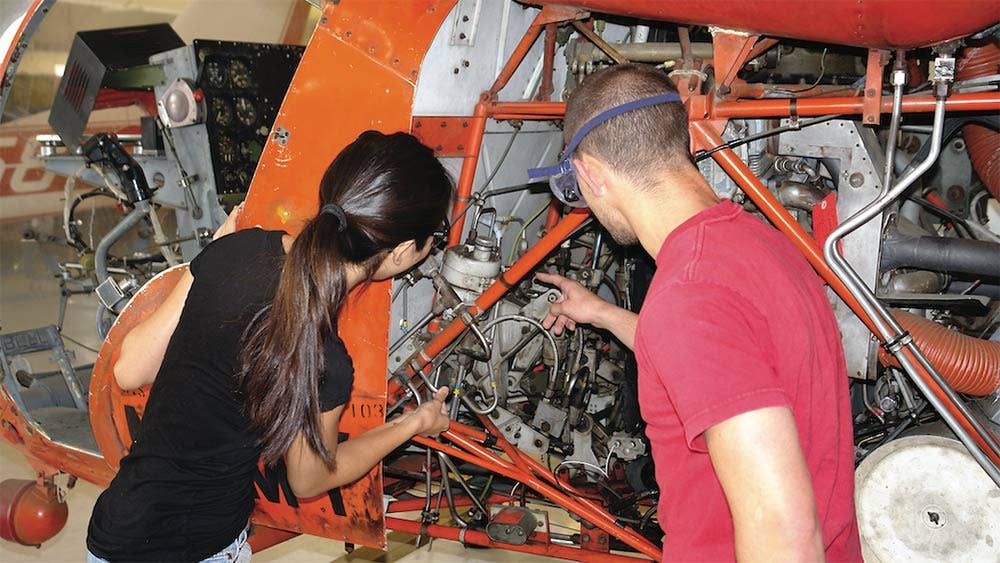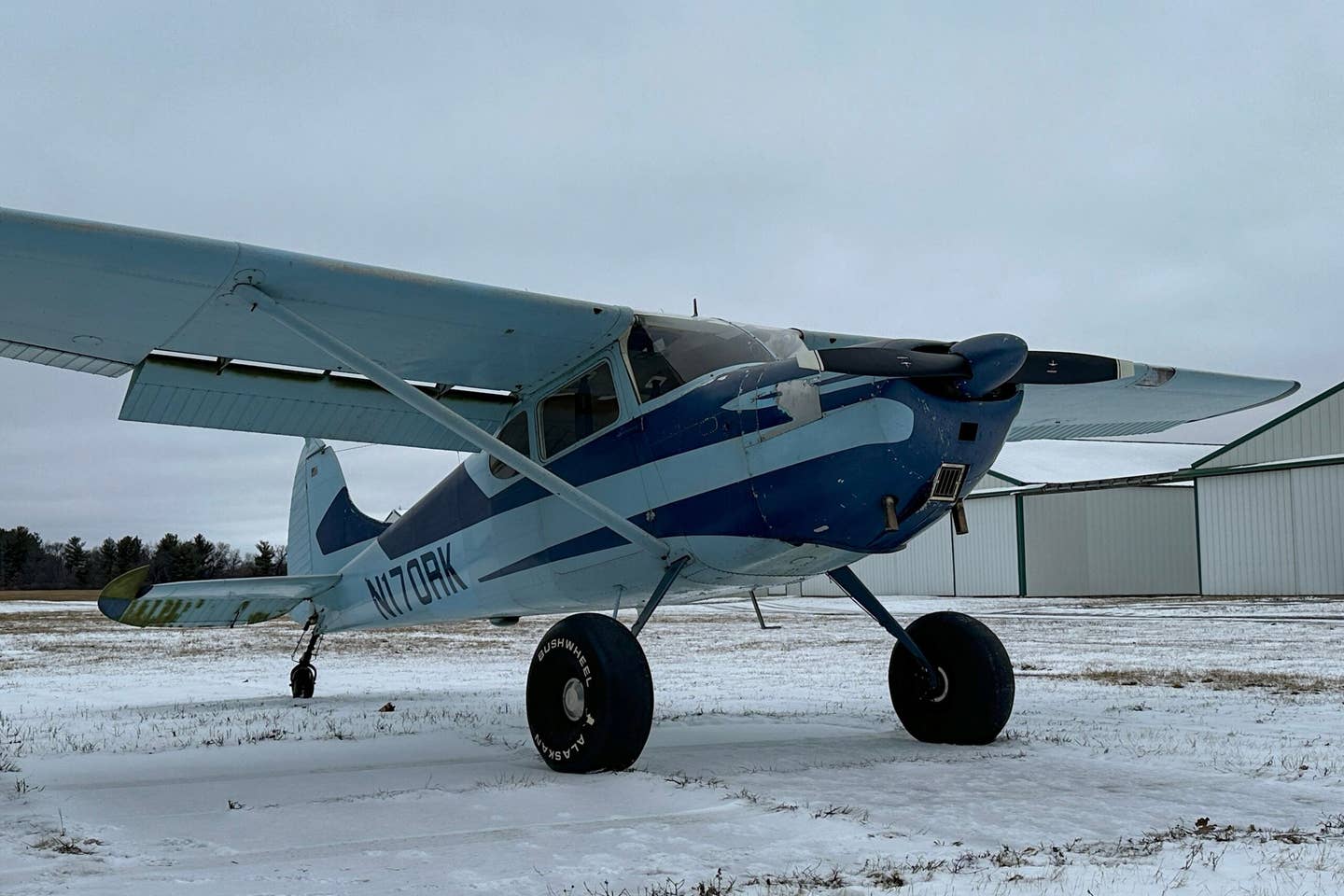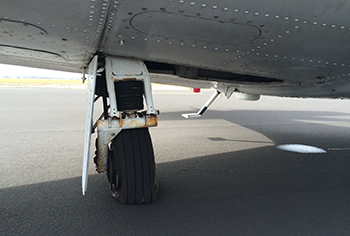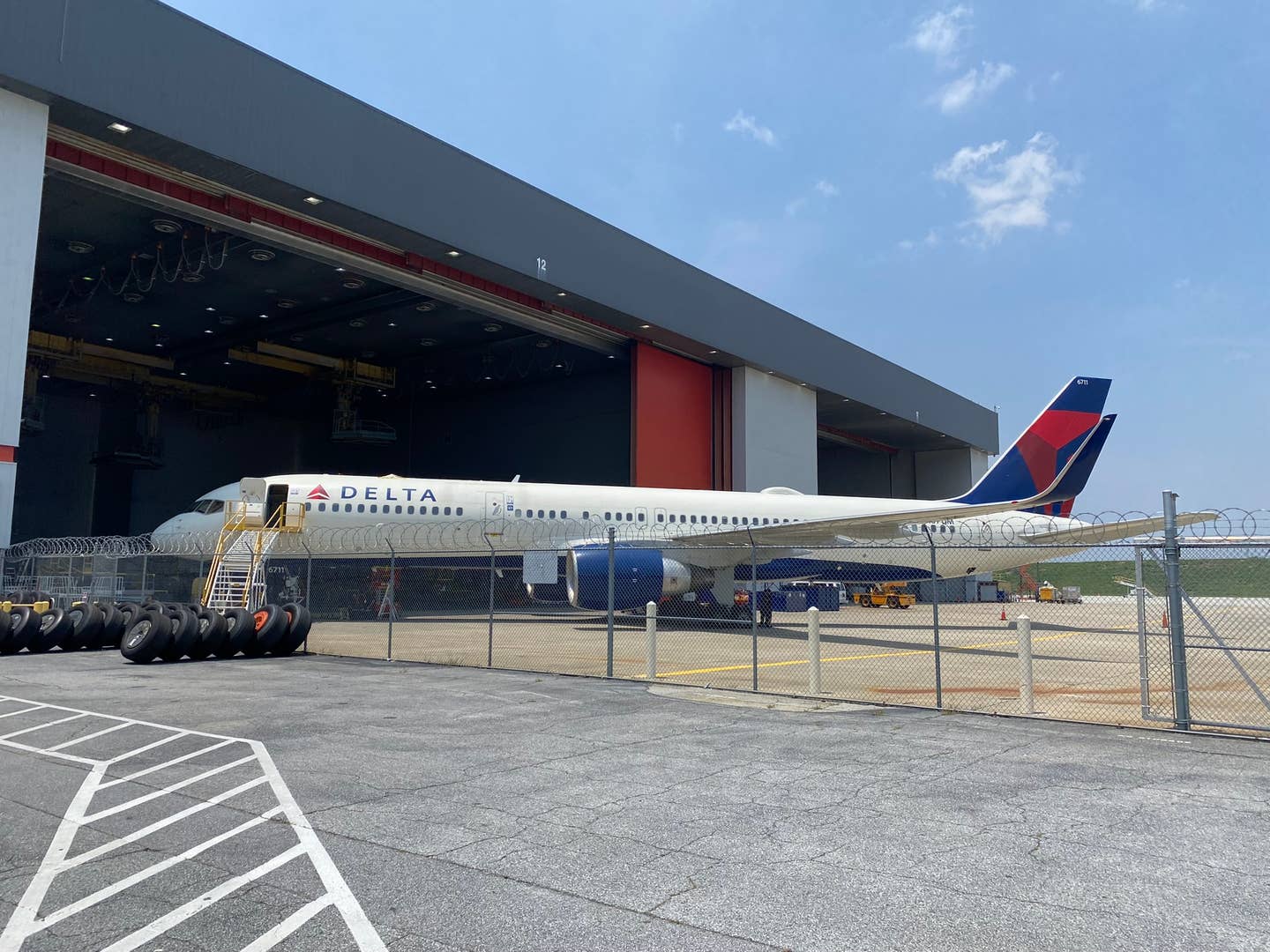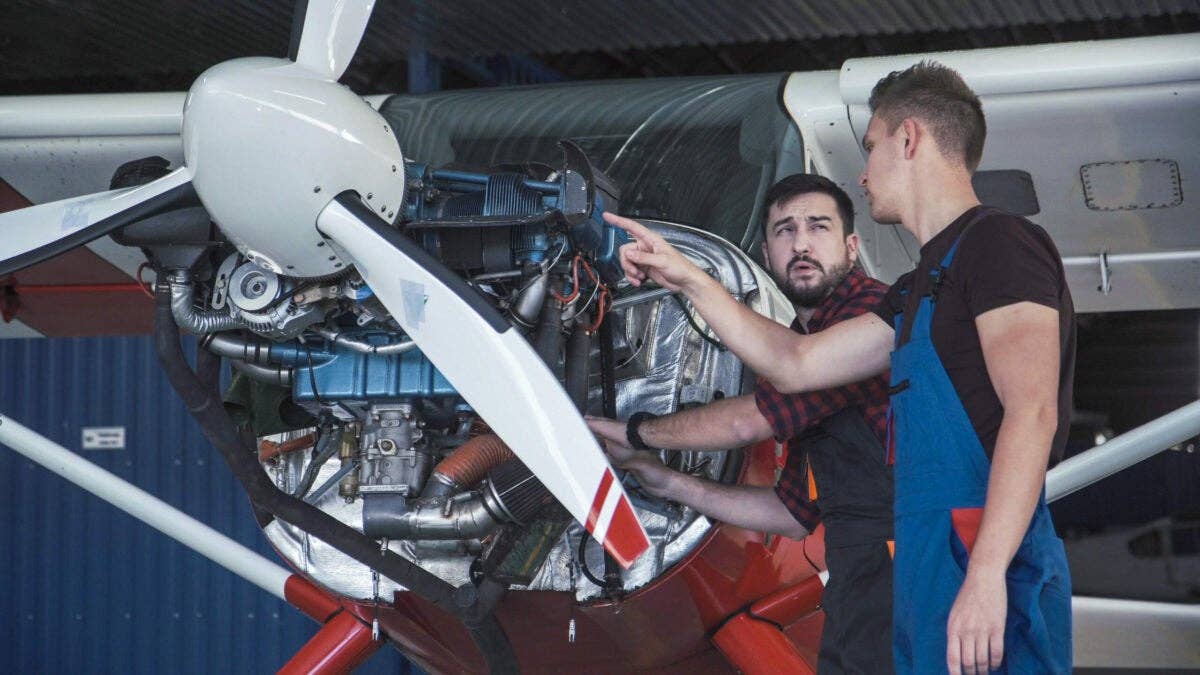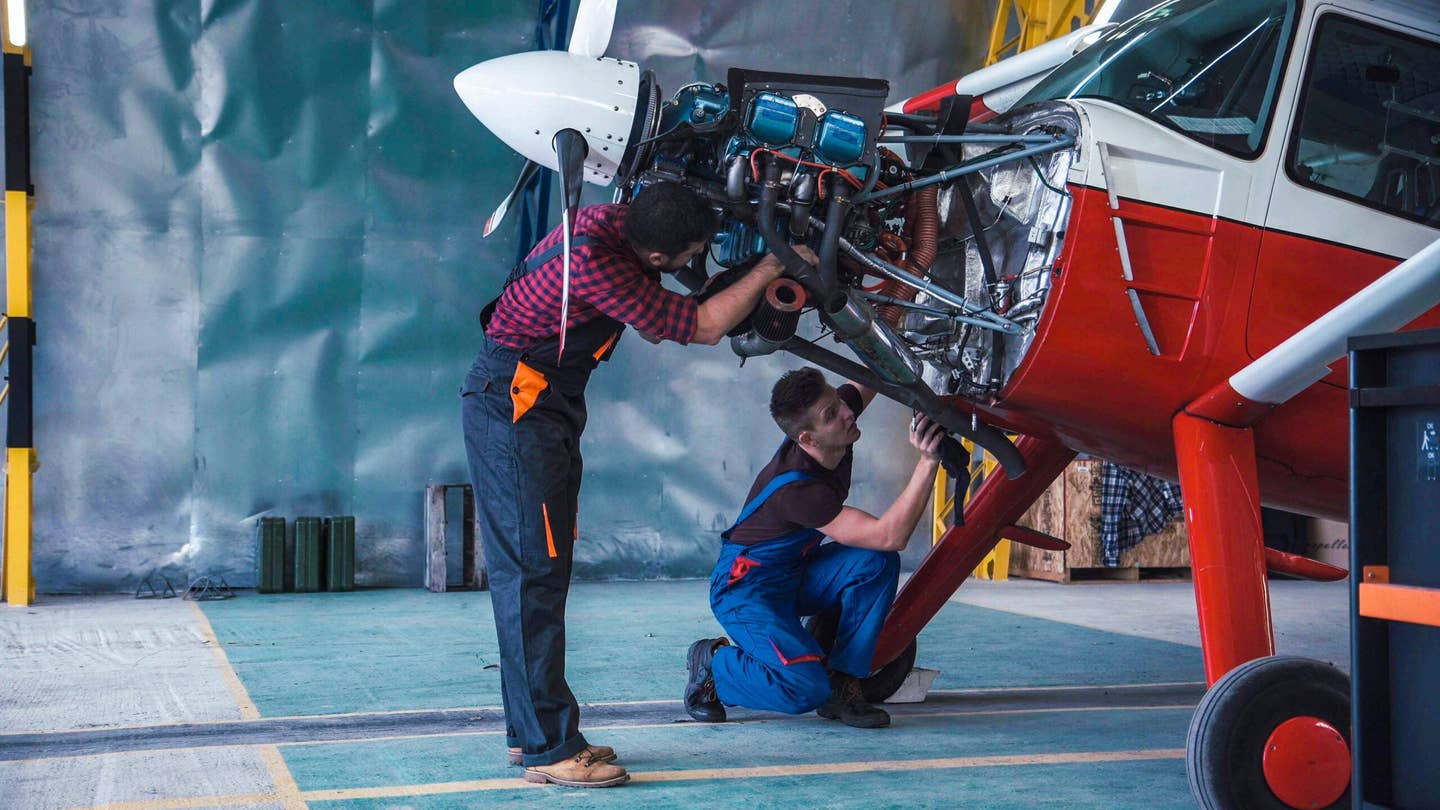Are You Flying With Approved Aircraft Parts?
A little bit of due diligence now can save you an expensive headache later, or worse.
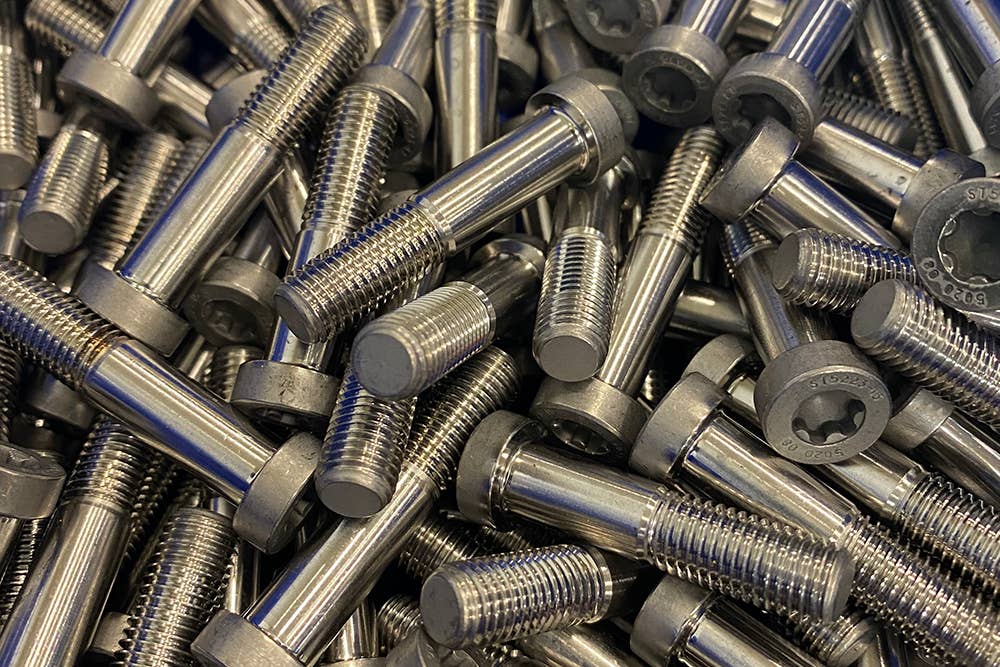
The best defense you can have against the threat of a SUP is to buy consistently from trusted suppliers. [Photo: Richard Scarbrough]
Pulling up to the hangar, you are eager to check the progress of the work on your airplane.
The installation of your Garmin, Aspen, or Avidyne avionics finally finished up last month, and you need a little more time familiarizing yourself with them before that big cross-country flight next month. The cost consumed your entire profit-sharing bonus, but it was worth it.
A local mechanic stops by the hangar whenever needed. He has a key and should have started work on that bracket replacement while you were still stuck in traffic, trying to leave the city. You cannot wait to shed this dreadful day and get airborne to clear your head.
“How do I know the parts I am flying behind are approved and not some garage sale knock-off? Well, that is a multibillion dollar question.”
The look on your mechanic’s face tells you all that you need to know. Something is wrong. From the look of things, you won’t be circling the pattern tonight.
“Where did you get that hardware you left for me to use on this installation?” he says grimly.
You reply, “My son found them on an aviation surplus inventory website. Why?”
After a long pause, your mechanic flatly states, “Well, one of them just sheared off in the engine case.”
Replacements Parts Are a Serious Topic
Aircraft replacement parts are a crucial component of continued airworthiness. Friedrich Nietzsche once famously said, “He who would learn to fly one day must first learn to walk and run and climb and dance; one cannot fly into flying.” Nietzsche failed to mention maintenance, as one must maintain the aircraft to fly successfully.
Even the smallest replacement part can ground an airplane, as was demonstrated in our parable above. Garmin makes cool stuff. Have you seen the new watch? However, it’s the little things that can make all the difference in the installation of new equipment.
One of the biggest questions many aircraft owners face is: How do I know the parts I am flying behind are approved and not some garage sale knock-off? Well, that is a multibillion-dollar question.
The seriousness of approved replacement parts is critical. It’s far too important to rush through. This article is the first installment in a series covering aircraft spares.
The FAA has a term for aircraft material that does not meet the standards for installation, and return to service — suspected unapproved parts (SUPs). Just because a bolt fits in the hole and torques to specs does not necessarily mean you are good to go. Approved aircraft parts must conform to strict guidelines.
In 1995, the FAA committed to addressing the issue of unapproved parts by establishing a program office dedicated to SUP material. The scope of aircraft maintenance, parts handling, and flight operations is far too immense for one agency to control. So, aviation essentially is a “self-policing entity,” with everyone holding each other accountable.
I can say that my 30-plus years in aircraft maintenance and parts distribution have introduced me to all sorts of characters, unsavory and otherwise. The rogues are very few and far between. The vast majority of my interactions were with professionals that took pride in their role and operated with the utmost integrity.
The FAA has a series of documents to help you get started in your quest to fly in compliance. What follows is by no means an exhaustive list. In time, we will cover much more territory as we navigate aircraft parts and spares together.
FAA AC 20-62E, “Eligibility, Quality, and Identification of Aeronautical Replacement Parts,” is a great place to start. This advisory circular provides a wealth of knowledge of aircraft parts. It's required reading for anyone dealing in parts, maintaining aircraft, or operators interested in what goes on under the cowling.
FAA AC 21-29, “Detecting and Reporting Suspected Unapproved Parts,” spells out the program parameters and offers guidance for navigating the sometimes tricky world of aircraft parts and materials.
FAA Order 8120.16A, “Suspected Unapproved Parts Program,” is intended for FAA personnel, but could be a deeper dive if you are an avgeek like me and read aviation regulation documents for fun.
The Aviation Spares Aftermarket
The entirety of the aircraft parts aftermarket is massive and will only continue to grow. Fortune Business Insights recently stated that the aircraft parts aftermarket will exceed $47 billion by 2028. This growth creates both opportunities and challenges for owners, operators, and maintenance professionals when it comes time to procure parts.
"The bottom line is to listen to that inner voice of reason that asks, “Why is this actuator $500 while all the others I have seen are $5,000?”
Mark Ginn, FAA/DAR-F, and director of quality and accountable manager for Wencor
Let’s start with the basics. We will get to more complex items, like line replaceable units (LRUs), later. The AN960-5 is a plain washer, has no unique characteristics, and is very unassuming. It is probably the same thing you can pick up at Ace Hardware or Napa, right? Wrong. The “AN” portion of the part number denotes the mil-spec standard it was manufactured to, in this case, a mil-spec standard “Air Force-Navy.” The 960 determines the style, and the -5 represents the bolt size the washer accommodates.
Where does one obtain such a part, and in doing so, how can you tell if it is approved? The popular aviation parts online marketplace StockMarket.aero returns eight pages of listings for AN960-5. Which company has approved parts? Who is cheaper? It’s just a washer, what harm could it do? Tread carefully. I once worked with an airline that unknowingly installed bad washers on their braking systems and almost grounded the entire fleet because of the ensuing corrosion.
The above questions are all excellent. After reading AC 20-62E, you are in a much better position to answer them. Even so, not every part is going to have back-to-birth paperwork and flawless traceability. You still need to do your homework and strive at all costs to stay approved and operate in compliance.
Operating in the Green
As stated above, the number of business entities advertising themselves as aircraft parts distributors numbers in the thousands. This list does not include the undocumented dealers, private sellers on the airfield, or eBay aficionados listing parts they acquired through the years. There are some approved parts on eBay, and if you buy parts from the popular auction site, do so with care, diligence, and a discerning eye.
The best defense you can have against the threat of a SUP is to buy consistently from trusted suppliers.
I recently connected with Mark Ginn, FAA/DAR-F, and the director of quality and accountable manager for Wencor, an aerospace parts distributor. Mark offered some valuable insights on the aftermarket. He has tips on staying compliant and advice when the time comes to buy.
I asked Mark what ensures Wencor is accredited to distribute aircraft parts.
“To ensure we meet operational requirements, Wencor presently holds recognized industry quality management standards that include ISO 9001:2015, AS9100, AS9120, and ASA-100 and [we] are also accredited [under]FAA 0056B as an aerospace distributor.”
We talked about different aspects of suspected unapproved parts, and he highlighted the following:
How can aircraft parts distributors protect themselves against counterfeit goods?
- Maximize availability of authentic products.
- Procure products from reliable sources, assuring authenticity and conformance.
- Control products possibly identified as suspect.
- Report products to other potential users and government authorities.
In the unfortunate event a situation is identified, what are the steps taken by the company to mitigate the risk?
Within the approved quality management system, a process addresses this situation in case of an occurrence.
Included in this process are:
- Initiation of the event
- Containment of the suspect product
- Notifications
- Investigation
- Closing
What advice can you offer to an aircraft owner, pilot, or mechanic when purchasing aircraft hardware?
Do business with an accredited supplier operating within an aerospace standard, including a robust supplier oversight program, an internal receiving program with exact criteria, and well-trained/experienced personnel.
These resources will help arm you with information when it comes time to purchase. No system is fail-safe, and it is impossible to completely guarantee fully traceable and compliant parts.
The bottom line is to listen to that inner voice of reason that asks, “Why is this actuator $500 while all the others I have seen are $5,000?”
That little voice may save you a big headache later on.

Sign-up for newsletters & special offers!
Get the latest FLYING stories & special offers delivered directly to your inbox

